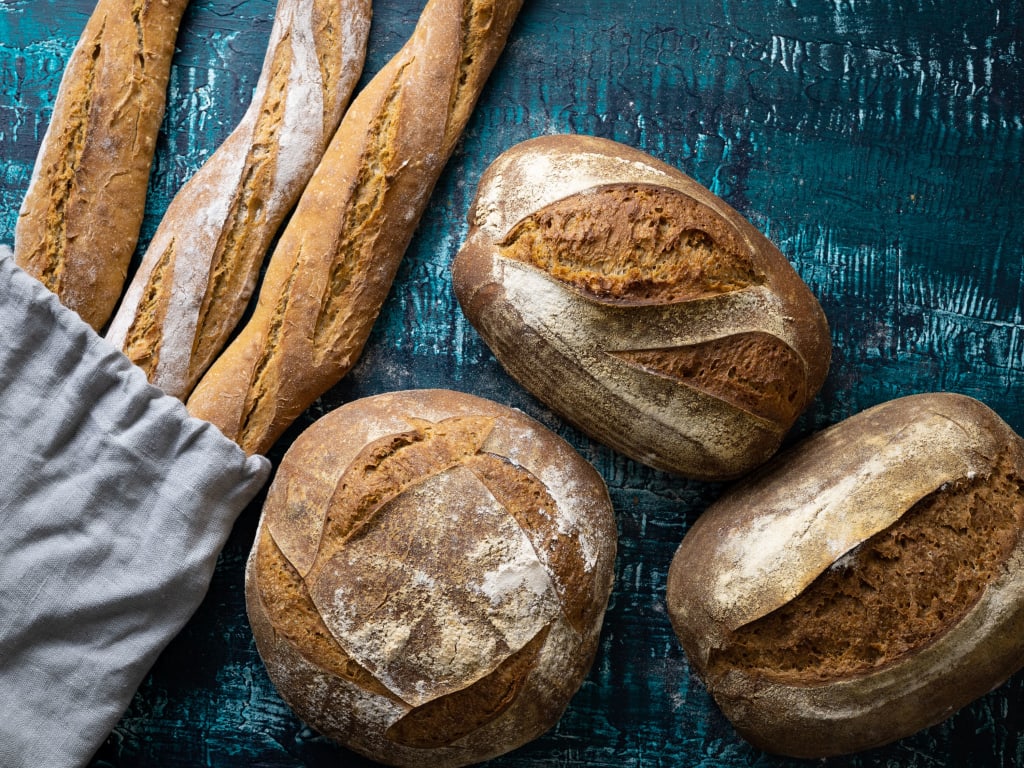Million Dollar Recipe for Making Sourdough Bread
Step-by-step through the whole Sourdough genesis process so you can become an expert at making great sourdough.

We no longer eat any bread other than this handmade sourdough bread. I really bake two to three loaves every week and always have a supply in my freezer! And once you give it a go, you probably will as well.
That's because sourdough bread is really delicious. Its main advantages are its high nutritional content and lack of added sugar and other additives seen in the majority of store-bought loaves. It tastes fantastic as well—a traditional, substantial bread with a soft, springy centre and a thick, crusty surface that isn't too sour.
However, I think the most amazing thing about my recipe is how adaptable it is. It works great as a sandwich, as a side dish with a salad, or for dipping into soup. It also makes a fantastic grilled cheese, which goes really well with my tomato soup.
REQUIREMENTS:
My recipe for sourdough bread is really flavorful, especially for having so few ingredients. You'll require:
1. Starter for sourdough:
You may buy this or make it yourself. Naturally, I suggest producing your own with my recipe for sourdough starter (it takes more than a week to create, but it's well worth it!).
3. Flour for bread:
For this recipe, I strongly advise using bread flour instead of all-purpose. I believe that bread flour yields a better-crumbed sourdough bread because it has a greater protein level.
3. Olive oil:
A tiny touch of olive oil contributes to the bread's ideal chewiness and softness. I also find that it prolongs the softness of my sourdough.
4. Salt:
Naturally, salt is essential for flavour, but it also has several other significant functions in sourdough bread. It fortifies the gluten in the dough, which is crucial for the bread's form and texture, balances the starter's acidity, and even prolongs the bread's shelf life by functioning as a natural preservative.
5. Water:
My recipe's water requirement will result in a sourdough loaf that is around 70% hydrated. I adore this degree of moisture because it yields a crumb that is just right—not too open, not too sour, but flavorful—that is easy to form and quite adaptable. We use it for everything from sandwiches to dipping in pot pie soup. You can experiment with adding more water if you'd like when you feel comfortable baking bread at this level of moisture. A bread with more water often has a more open crumb, a tangier flavour, and a texture that works well for dipping but is less suited for sandwiches.
Similar to my macaron recipe, I created this sourdough bread recipe using weights since I think it's the most straightforward method to prepare; however, I've also provided cup proportions.
How to Make Sourdough Bread
Prepare the Dough
1.In a large dish, mix oil, water, and sourdough starter. Before adding, make sure your starting is bubbly and lively.
2.Add the salt and bread flour.
3.Your dough will still appear shaggy after you stir it until mostly mixed. Avoid over-mixing!
4.After covering, leave it for an hour at room temperature.
Folding and Stretching
1.Using your hands, roll the dough into a ball, then wash your hands with cold water.
2.After stretching the dough's top over its bottom, rotate it 90 degrees and repeat. If you would want a better picture, I walk through this in the video below.
3.After completing four rounds of stretching and folding, cover and set aside in a warm location to rise for half an hour.
4.After letting the dough rise until it has expanded by 80%, continue the stretch and fold method every half an hour.
Combination
1.Roll out your dough on a lightly floured surface, deflating it and shaping it into a rectangle.
2.Raise the dough on the right side, fold it to the centre and then do the same with the left side (much like how you fold paper in thirds).
3.Beginning with the short end of the rectangle, roll into a tight log and tuck the ends beneath.
4.Spread out in a bread pan that has been oiled, cover loosely, and refrigerate to rest for the entire night.
Zaintz's Tip : Although I do include directions for baking straight away, I advise proving your dough in the fridge for at least one night. A night's proof will promote more fermentation, improve the bread's rising, and help the flavour develop. Having said that, I prefer not to refrigerate my dough for more than 48 hours (at most) prior to baking. If you let it sit for too long, the sourdough bread may overproof and lose its final texture. I can't provide advice on that either because I don't freeze my dough before baking.
Cooking
1.While the oven is heating up, allow the dough to rest at room temperature.
2.Cut a ¼-inch deep score along the centre of the bread.
3.Cover with a tent made of aluminium foil or another bread pan.
4.After 30 minutes of baking at 450F, take off the cover and continue baking for another 20 to 23 minutes, or until the bread reaches 206-208F.
5.Give the bread fifteen minutes to cool in the pan.
6.The bread should be gently taken out of the pan because it is still hot, and placed on a cooling rack. Before slicing, allow the bread to cool fully.
Zaintz's Tip
::
Resist the urge to cut into the warm bread. Your bread may get thick and sticky if you do this.
::
FINAL VERDICT
Although there are a tonne of sourdough bread recipes and methods out there, I've spent the last year meticulously perfecting my own version, which is my personal favourite. I'm eager to hear your thoughts on it and hope you'll always want to have bread on hand.
About the Creator
Z.a.i.n.t.z
🤞🏾Writing to 🧡share❤️ my dreams. 👌🏾💯
- Web Designer
- Animator
- Singer - Songwriter
- Social Media Content Creator
- Video Editor
- Article & Blog Writer






Comments (2)
Wow, Z.a.i.n.t.z.! I am going to try the sourdough with good butter and anchovies from Fishwife. This sounds delicious and your writing gives me confidence I can do this. One thing, though, I do not see the weights or measures for the ingredients and the sourdough starter? Am I missing something here? Thanks for this post, and if you advise, I'll get started!
I like sourdough bread, but really I am not a bread baker. I am mainly if I bake it is cookies or cakes from a box mix. Good work.